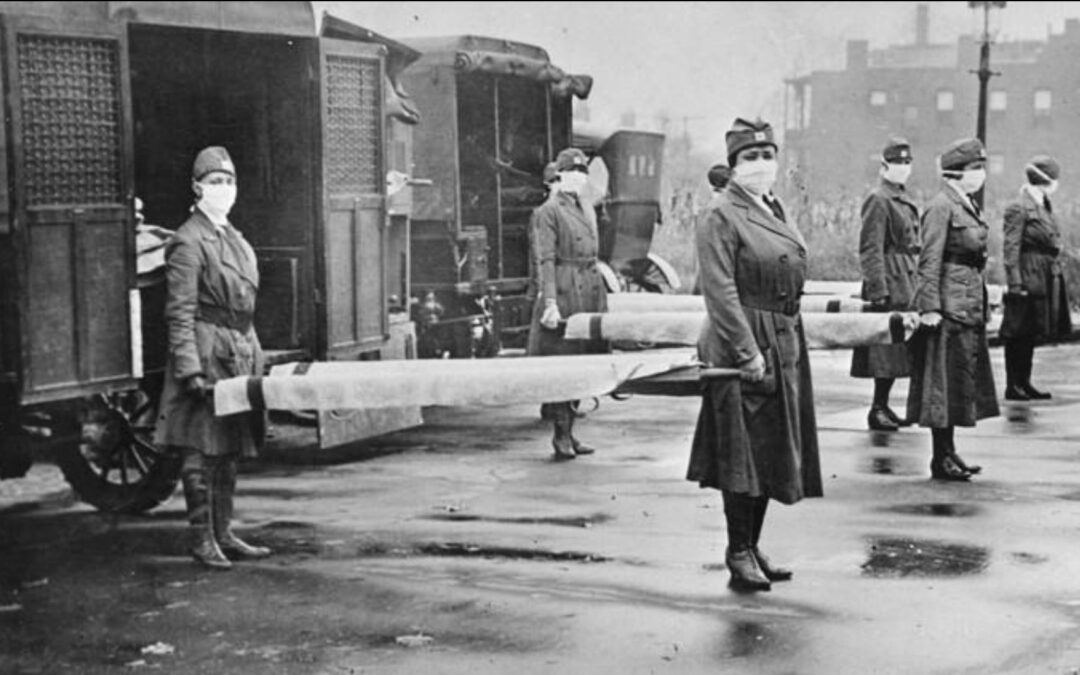From the Austin American-Statesman: “More women than men were left standing after the war and pandemic in 1918. (Image from the Library of Congress via the New York Times)
As Texas women celebrate the centennial of the 19th Amendment in the midst of a pandemic, they are linked in more ways than one to the women who battled for the amendment’s passage more than 100 years ago.
In a twist of historical fate, early 20th century suffragists not only found themselves being called to mobilize for the U.S. World War I effort even as they fought to keep the votes for women campaign alive—they also had to navigate the challenges of the 1918 flu pandemic, which lasted until 1920 and infected more than 500 million people worldwide (and killed an estimated 675,000 people in the U.S. alone).
At the onset of the pandemic, the suffrage campaign had entered a critical moment, with all indicators seeming to suggest that supporters were at last poised to claim victory after a 70-year battle. A dozen states had already granted women voting rights, and President Woodrow Wilson had come out in favor of a suffrage amendment.
Then the virus struck. Suffragists had to cancel public events and fundraising efforts languished — particularly as many suffragists and legislative allies fell ill themselves. The amendment had been passed by the U.S. House of Representatives, but was languishing in the Senate, blocked in large part by Southern legislators who sought to suppress African-American women voters. As conditions worsened, leaders in the suffrage movement feared that they might lose their tenuous grasp on approaching victory.
Fortunately, women on the front lines of the suffrage campaign were well experienced when it came to dealing with adversarial conditions. In other words, to borrow a phrase popularized in the 2020 pandemic, they knew how to “pivot”.
In the wake of canceled public events, suffragists shifted their focus to canvassing and other forms of one-on-one advocacy, and continued to distribute pamphlets, organize petitions, and campaign against legislators who opposed votes for women—and emphasize women’s wartime contributions, a key message point in the final years of the votes for women campaign. Thanks to their perseverance, the suffrage bill was eventually approved by the Senate, and sent to the states for ratification in June 1919.
Additional Learning:
New York Times: “How the Spanish Flu Almost Upended Women’s Suffrage”
Smithsonian Magazine: “How the 1918 Flu Pandemic Helped Advance Women’s Rights”
Wisconsin Public Radio: “The 1918 Flu and the Women’s Suffrage Movement”
National Geographic: “A Pandemic Nearly Derailed the Women’s Suffrage Movement”

